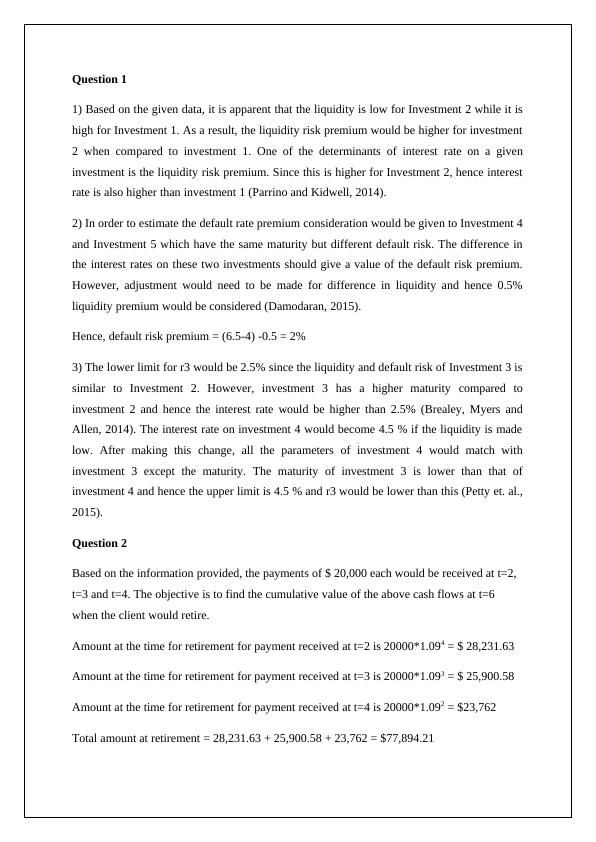Ask a question from expert
Fundamentals of Corporate Finance PDF
9 Pages1649 Words212 Views
Added on 2021-10-07
Fundamentals of Corporate Finance PDF
Added on 2021-10-07
BookmarkShareRelated Documents
End of preview
Want to access all the pages? Upload your documents or become a member.
Corporate Finance: Present Value, Bonds, WACC, NPV, Stock Valuation, Technical and Fundamental Analysis
|6
|1023
|70
Assignment on finance PDF
|4
|439
|19
Accounting & finance Assignment PDF
|16
|1672
|27
Financial Management - Solved Questions and Answers
|5
|664
|61
Fundamental of Finance Assignment in PDF
|13
|1984
|13
Corporate Finance - Present Value of Annuity, Bond Issues, WACC, NPV, IRR, Stock Valuation, Technical and Fundamental Analysis
|6
|1081
|461


